Related Research Articles

Jean Desmarets, Sieur de Saint-Sorlin was a French writer and dramatist. He was a founding member, and the first to occupy seat 4 of the Académie française in 1634.

Dieppe is a coastal community in the Arrondissement of Dieppe in the Seine-Maritime department in the Normandy region of northern France. The population stood at 29,080 in 2017.
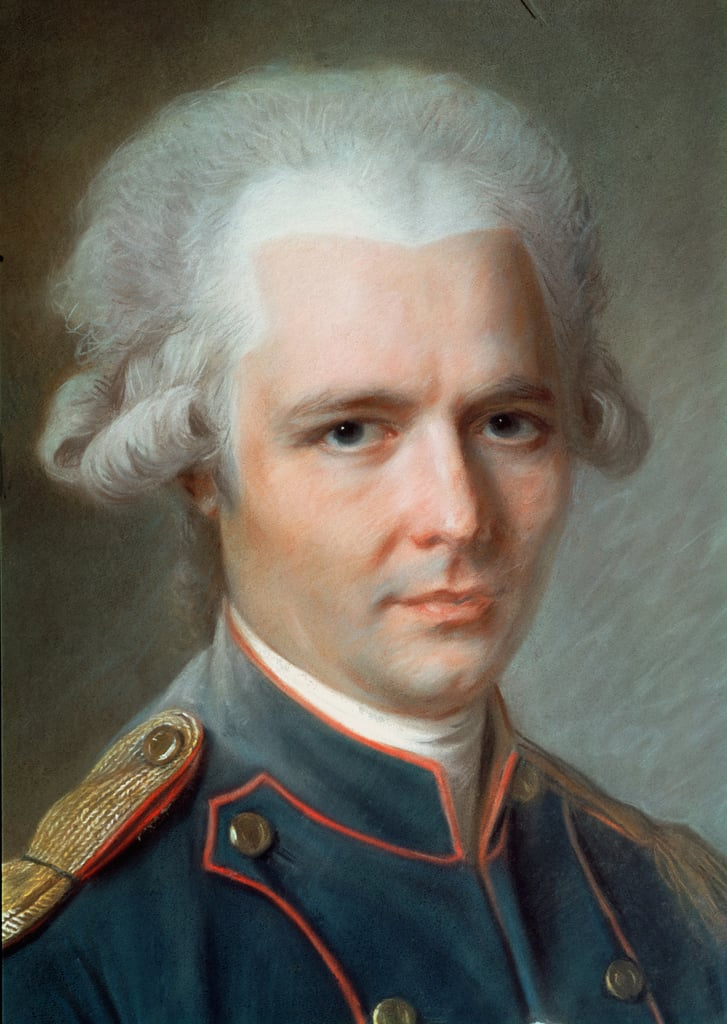
Pierre Ambroise François Choderlos de Laclos was a French novelist, official, freemason and army general, best known for writing the epistolary novel Les Liaisons dangereuses (1782).
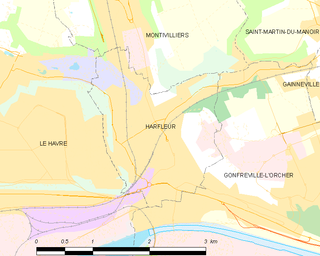
The Siege of Harfleur was conducted by the English army of King Henry V in Normandy, France, during the Hundred Years' War. The defenders of Harfleur surrendered to the English on terms and were treated as prisoners of war. The English army was considerably reduced by casualties and an outbreak of dysentery during the siege but marched towards Calais, less a garrison left behind at the port. The English were intercepted en route and fought the Battle of Agincourt, inflicting a huge defeat on the French.

The Battle of Patay was the culminating engagement of the Loire Campaign of the Hundred Years' War between the French and English in north-central France. The French cavalry inflicted a severe defeat on the English. Many of the English knights and men-at-arms on horses were able to escape but crippling losses were inflicted on the corps of veteran English longbowmen, which was not reconstituted after the battle. This victory was to the French what Agincourt was to the English. Although credited to Joan of Arc, most of the fighting was done by the vanguard of the French army as English units fled, and the main portions of the French army were unable to catch up to the vanguard as it continued to pursue the English for several miles.

Henri Desmarets was a French composer of the Baroque period primarily known for his stage works, although he also composed sacred music as well as secular cantatas, songs and instrumental works.
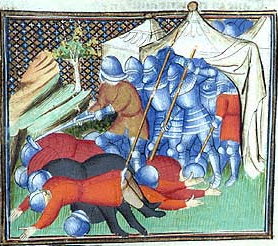
The siege of Meaux was fought in 1421-1422 between the English and the French during the Hundred Years' War. The English were led by King Henry V. Henry became ill while fighting this long battle, which took place during the winter months. He died on 31 August as a result.
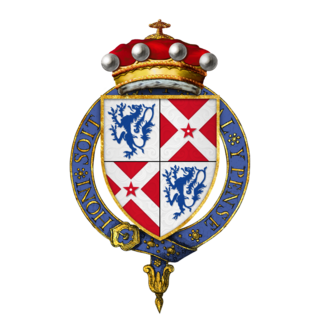
William Neville, 1st Earl of Kent KG and jure uxoris 6th Baron Fauconberg, was an English nobleman and soldier. He fought during the latter part of the Hundred Years War, and during the English dynastic Wars of the Roses.

The Château de Dieppe is a castle in the French town of Dieppe in the Seine-Maritime département.

Veules-les-Roses is a commune in the Seine-Maritime department in the Normandy region in northern France.

Louis des Balbes de Berton de Crillon, 1st Duke of Mahón, 2nd Duke of Crillon was a Franco-Spanish military officer who reached the rank of Captain general of the Army. He became a soldier at the age of 16 and served with distinction in the French army before transferring to the army of Spain, which was allied with France for much of the 18th century. A member of a distinguished military family, he was widely admired for his personal courage, courtesy and chivalry. By the end of his life he had risen to the highest military rank in Spain and it was said that he had served in 68 engagements.

Samuel Des Marets or Desmarets was a French Protestant theologian.

Charles Humbert was a French army captain, tax collector, Senator and newspaper proprietor.

The Régiment Royal–La Marine was an infantry regiment of the Kingdom of France, established in 1669. The regiment was directly involved in the Day of the Tiles, which took place in Grenoble on June 7, 1788. The last unit of the regiment was incorporated into the 23 demi-brigade on March 21, 1797 and the regiment ceased to exist.
A list of events from the year 1741 in France.
The siege of Saint-Denis was the last instance of cooperation between the English and their Burgundian allies in the Hundred Years' War. Saint-Denis, the traditional burial place of the kings of France, was located in the outskirts of English-held Paris, and had been captured by the French a couple of months earlier. The enemy presence there critically endangered the English position in the capital, and, aiming to retake it urgently, the English moved onto the town in August with a handful of Burgundian auxiliaries. The siege was undertaken during the peace congress of Arras, during which no end to the fighting was seen, as both sides struggled to gain ground around and over Paris. The English were victorious at St. Denis after the French garrison surrendered due to lack of external support.
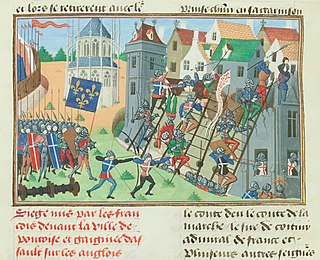
The Siege of Pontoise took place during the Hundred Years War. French forces led by King Charles VII of France besieged and captured the last English stronghold in Île de France, eliminating the English threat to Paris.

The Siege of Dieppe took place during the Hundred Years War. English forces led by John Talbot, Earl of Shrewsbury besieged and failed to capture the French-held port of Dieppe in Normandy.

The Siege of Montargis took place during the Hundred Years War. A French relief army under Jean de Dunois routed an English force led by the Earl of Warwick.
William Peyto Lord of Chesterton was an English knight from Warwickshire. He was the son of William de Peyto and Joan Thornbury.
References
- Barker, Juliet R. V. (2010). Conquest : the English kingdom of France in the Hundred Years War . London: Abacus. ISBN 978-0-349-12202-1.